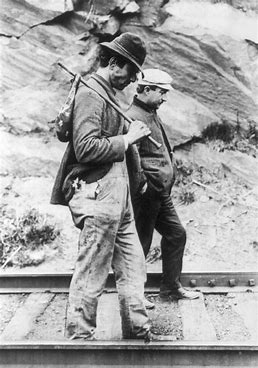In June 1914, part of General Charles Kelly’s Industrial Army (commonly called the Hobo Army) converged on Renick by foot on its way to Washington, DC. The marchers camped one night at Renick and boarded a C&O freight car the next morning. Why the men walked to Renick is anyone’s guess. Perhaps they thought they could board the car without detection. The train crew, however, fought the men, threw them off the train, and forced them to continue their march by foot. The army was on its way to Washington, DC, to protest the lack of employment opportunities and relief for the unemployed. They reached Washington on July 4.
The 1914 march was Kelly’s second one from California to Washington, DC. The first march was in 1894 during a time when the United States was suffering from a severe depression, an agricultural drought, and high unemployment without any state or federal assistance. The marches were advocating for a federally-funded public works program. With 1,500-2,000 protestors it was the larger of the two marches. A young tramp, Jack London, 18, participated in the march, later became a prominent author, and wrote about the march in “The Road.”
Kelly’s marches were not the first. Earlier in 1894, Jacob S. Coxey, an Ohio rancher, organized the Army of The Commonwealth in Christ and marched to Washington for the same purposes as General Kelly. Upon reaching the Capitol, Coxey was arrested, sympathizers were beaten by the police, and the marchers were detained in their camp. It is considered to be the first protest march on the Capitol. President Grover Cleveland did not believe it was the government’s duty to provide individuals with work. Not until President Franklin Roosevelt came into office did the federal government create a public works program as part of the New Deal.
There is some speculation that the author L. Frank Baum saw Coxey’s march to Washington, and his story, Wizard of Oz, is about that march.
Photo courtesy of Wikipedia.
Sources: The Greenbrier Independent, The Independent-Herald, Washington Daily Press, The Commonweal in the heartland: Charles T. Kelly and Iowa’s Industrial Army by Ryan J. Sprau, Can a Hobo Share a Boxcar? Jack London, the Industrial Army and the Politics of (In)visibility.
Correction:
Last week’s A Look Back incorrectly dated when Dunsmore Business College admitted women. Women were admitted in 1893, 77 years before the University of Virginia enrolled women outside of the nursing program.


